A presentation at Wildnet Technologies in September 2025 in Noida, Uttar Pradesh, India by Azpirantz Technologies

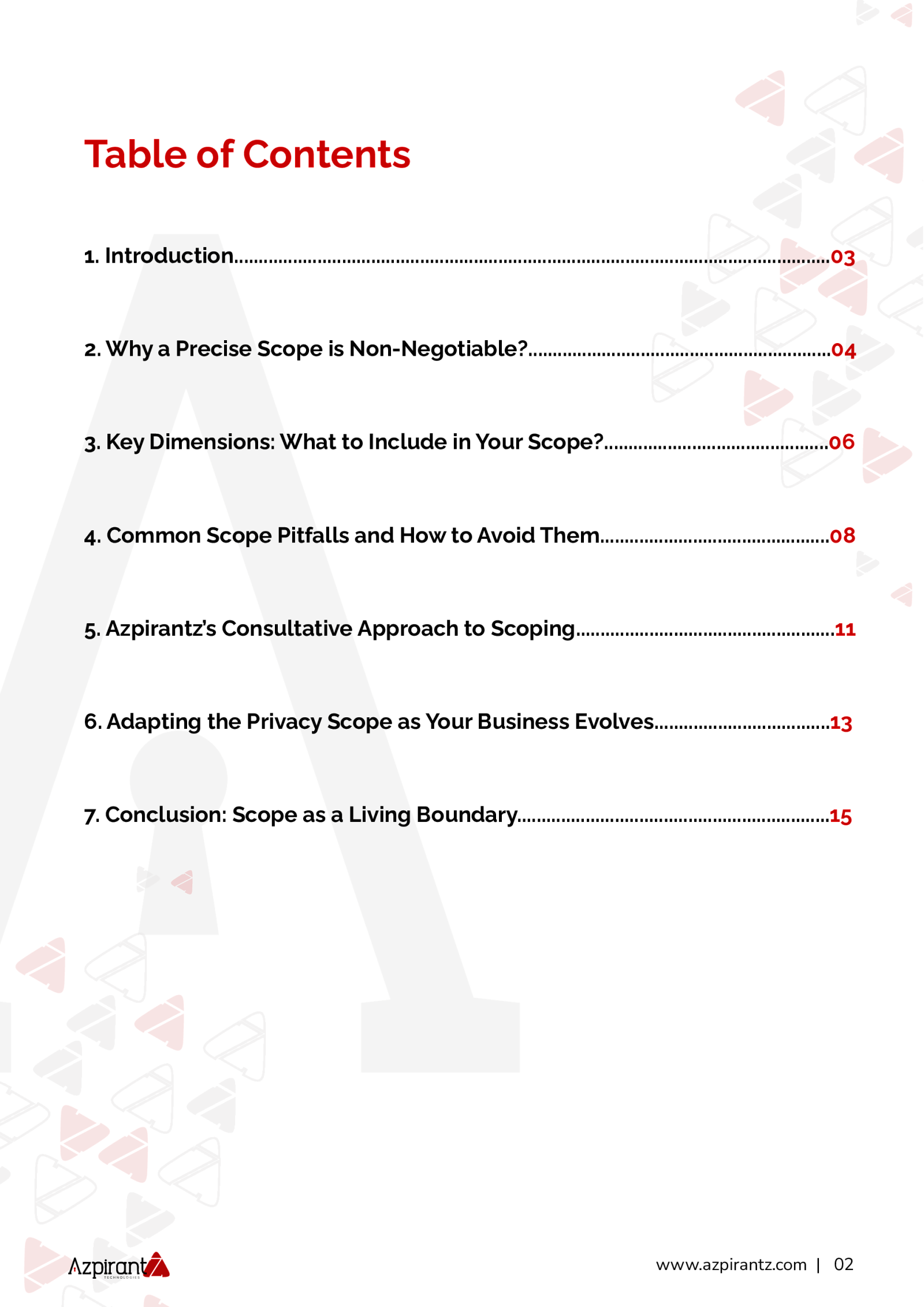
Table of Contents 1. Introduction…………………………………………………………………………………………………………..03 2. Why a Precise Scope is Non-Negotiable?……………………………………………………..04 3. Key Dimensions: What to Include in Your Scope?……………………………………….06 4. Common Scope Pitfalls and How to Avoid Them………………………………………..08 5. Azpirantz’s Consultative Approach to Scoping……………………………………………..11 6. Adapting the Privacy Scope as Your Business Evolves………………………………13 7. Conclusion: Scope as a Living Boundary……………………………………………………….15 www.azpirantz.com | 02
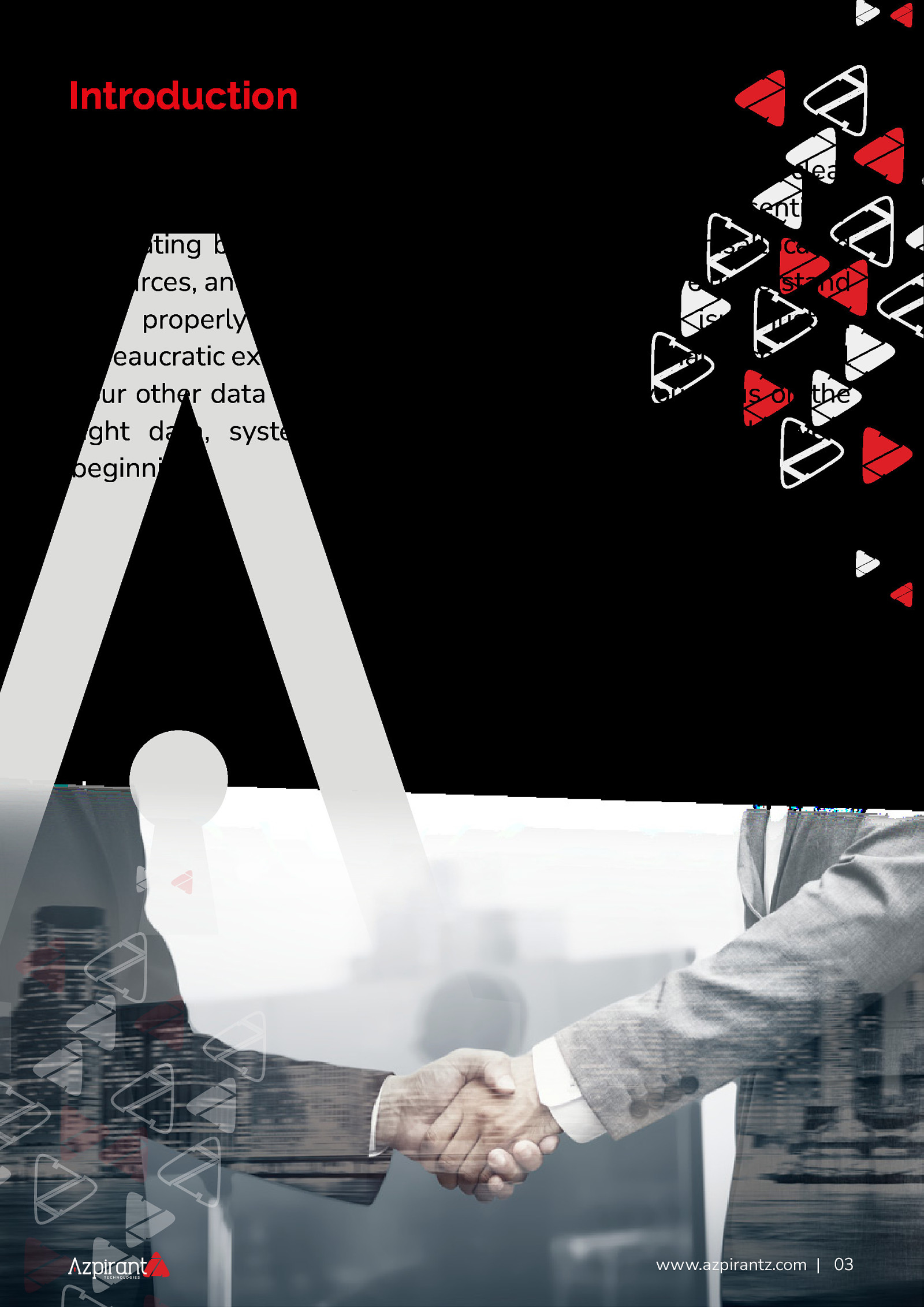
Introduction Building an effective privacy program starts with a clear roadmap. Without a well-defined scope, you are essentially navigating blind, risking overlooked obligations, misallocated resources, and critical blind spots. At Azpirantz, we understand that properly scoping your privacy program isn’t just a bureaucratic exercise; it’s the foundational step that anchors all your other data protection efforts. It ensures you focus on the right data, systems, and legal obligations from the very beginning. www.azpirantz.com | 03
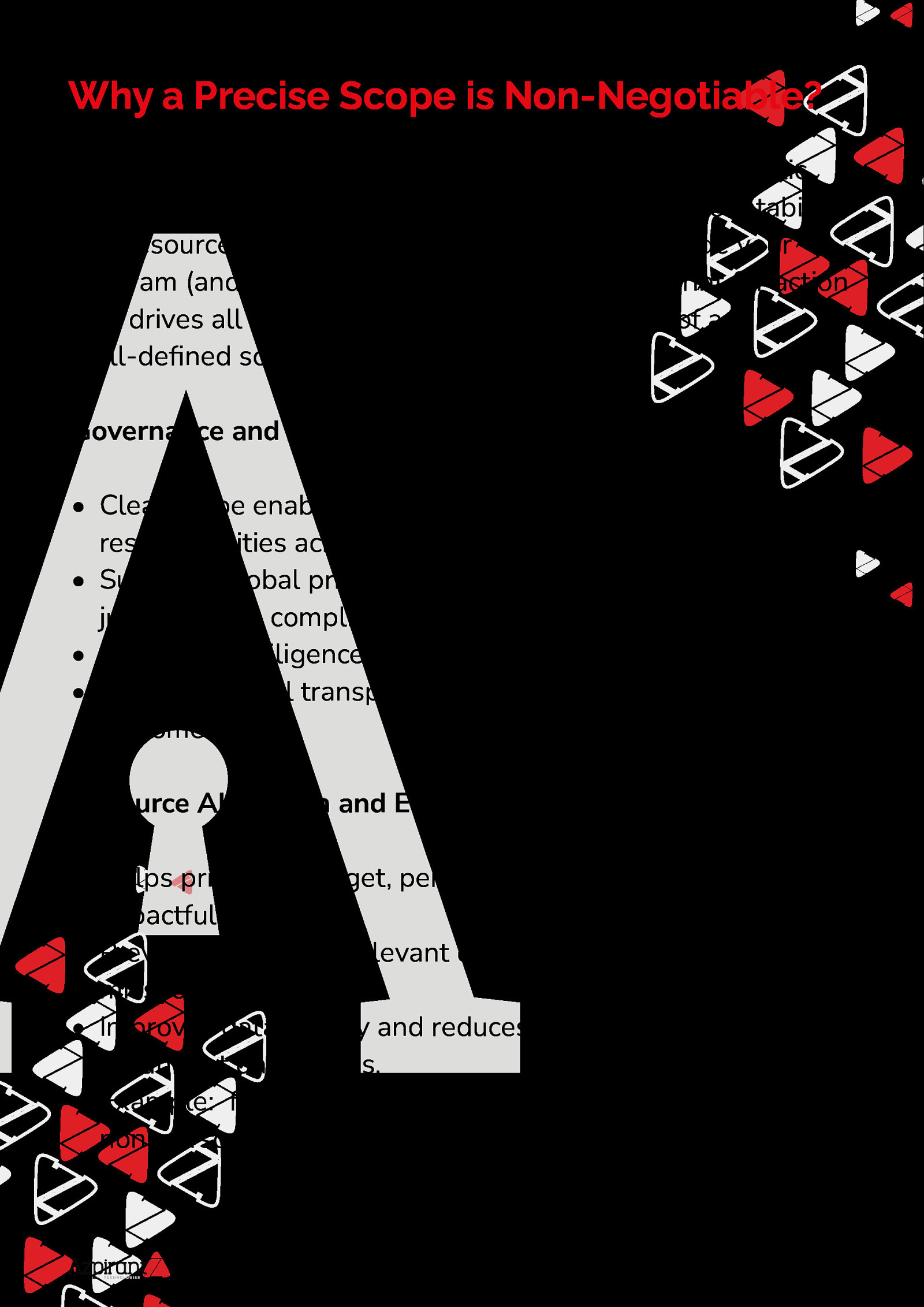
Why a Precise Scope is Non-Negotiable? Clearly scoping a privacy program is not just a bureaucratic exercise; it is essential for effective governance, accountability, and resource allocation. By defining what falls inside your program (and what does not), you create a blueprint for action that drives all other privacy efforts. Key benefits of a well-defined scope include: Governance and Accountability • Clear scope enables assignment of compliance responsibilities across data domains or business units. • Supports global privacy accountability; demonstrating, not just claiming, compliance. • Acts as due diligence for defining roles and controls. • Fosters internal transparency and trust with regulators and customers. Resource Allocation and Efficiency • Helps prioritize budget, personnel, and tools toward impactful areas. • Prevents effort on irrelevant data; ensures no critical area is missed. • Improves data quality and reduces costs by identifying redundant data stores. • Example: focus on HR and customer data, exclude public or non-personal datasets. www.azpirantz.com | 04
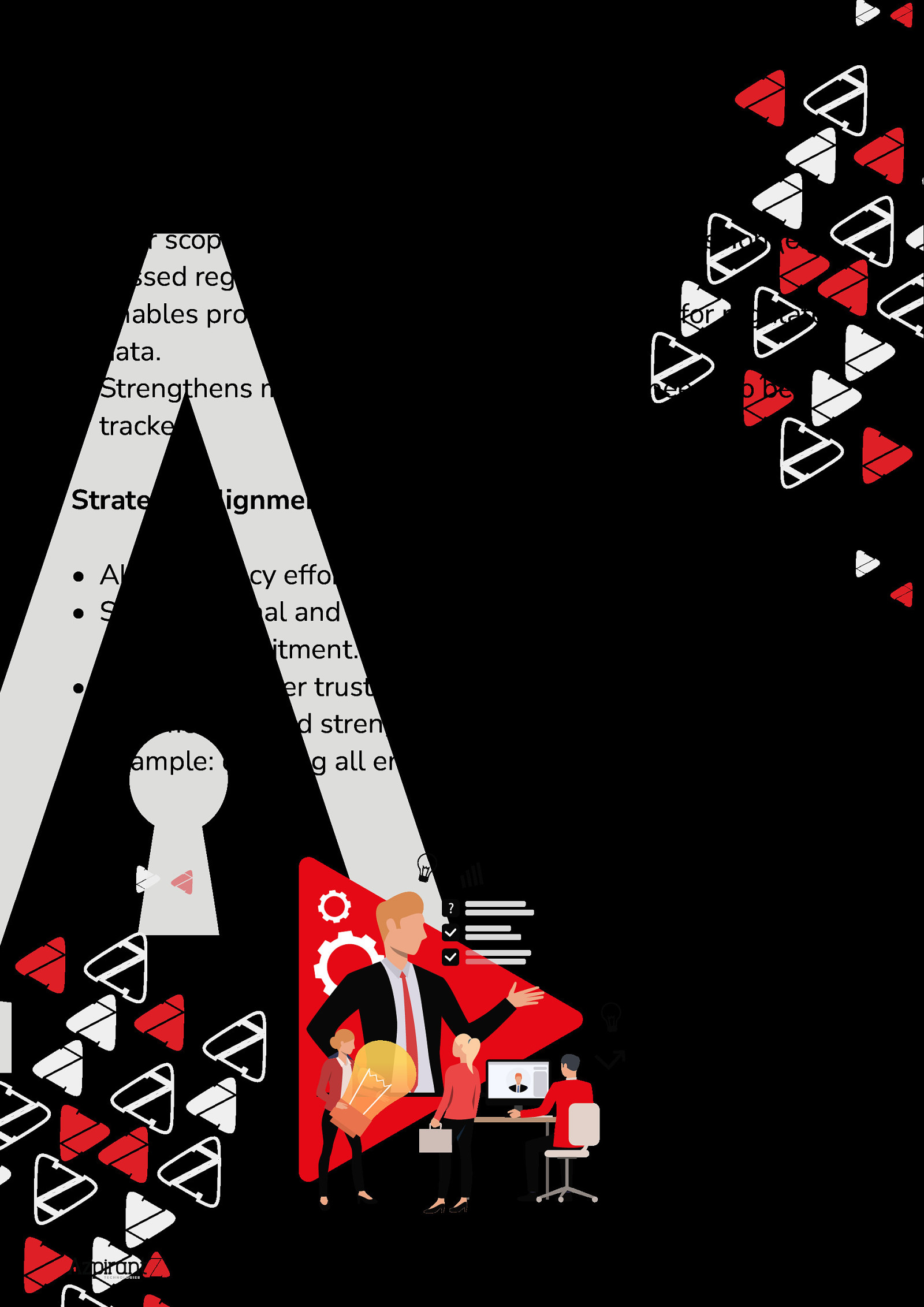
Compliance and Risk Management • Defines which laws and risks apply; making compliance efforts focused and practical. • Poor scoping can lead to non-compliance by omission (e.g., missed regions or data types). • Enables proper controls (policies, tech, audits) for regulated data. • Strengthens monitoring by narrowing what needs to be tracked. Strategic Alignment and Trust • Aligns privacy efforts with business strategy and values. • Shows internal and external stakeholders the company’s privacy commitment. • Builds consumer trust and competitive advantage, privacy becomes a brand strength. • Example: covering all employee and customer data globally. www.azpirantz.com | 05
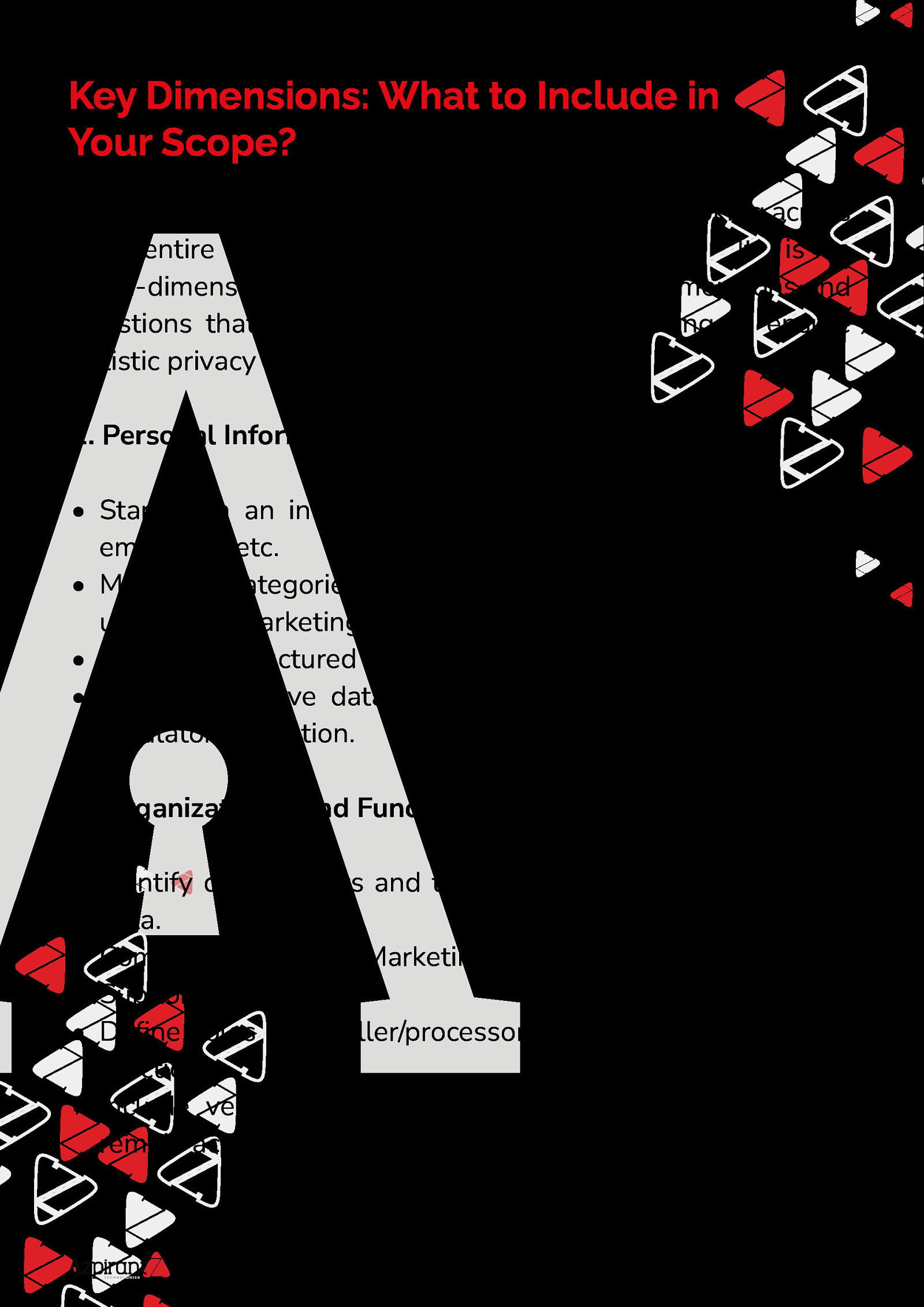
Key Dimensions: What to Include in Your Scope? Defining the scope of a privacy program requires looking across the entire organization and data lifecycle. It is a multi-dimensional exercise. Below are the key dimensions and questions that Azpirantz recommends addressing to ensure holistic privacy coverage in your scope: 1. Personal Information and Data Types • Start with an inventory of personal data: customer, user, employee, etc. • Map data categories (e.g. contact, health, financial) to their use cases (marketing, HR, analytics). • Include unstructured sources (emails, logs, backups). • Identify sensitive data that may require extra controls or regulatory attention. 2. Organizational and Functional Scope • Identify departments and third parties processing personal data. • Common areas: HR, Marketing, Sales, Product, IT, Security, Support. • Define roles (controller/processor) and responsibilities per function. • Include vendors (e.g. payroll providers), as organizations remain accountable. www.azpirantz.com | 06
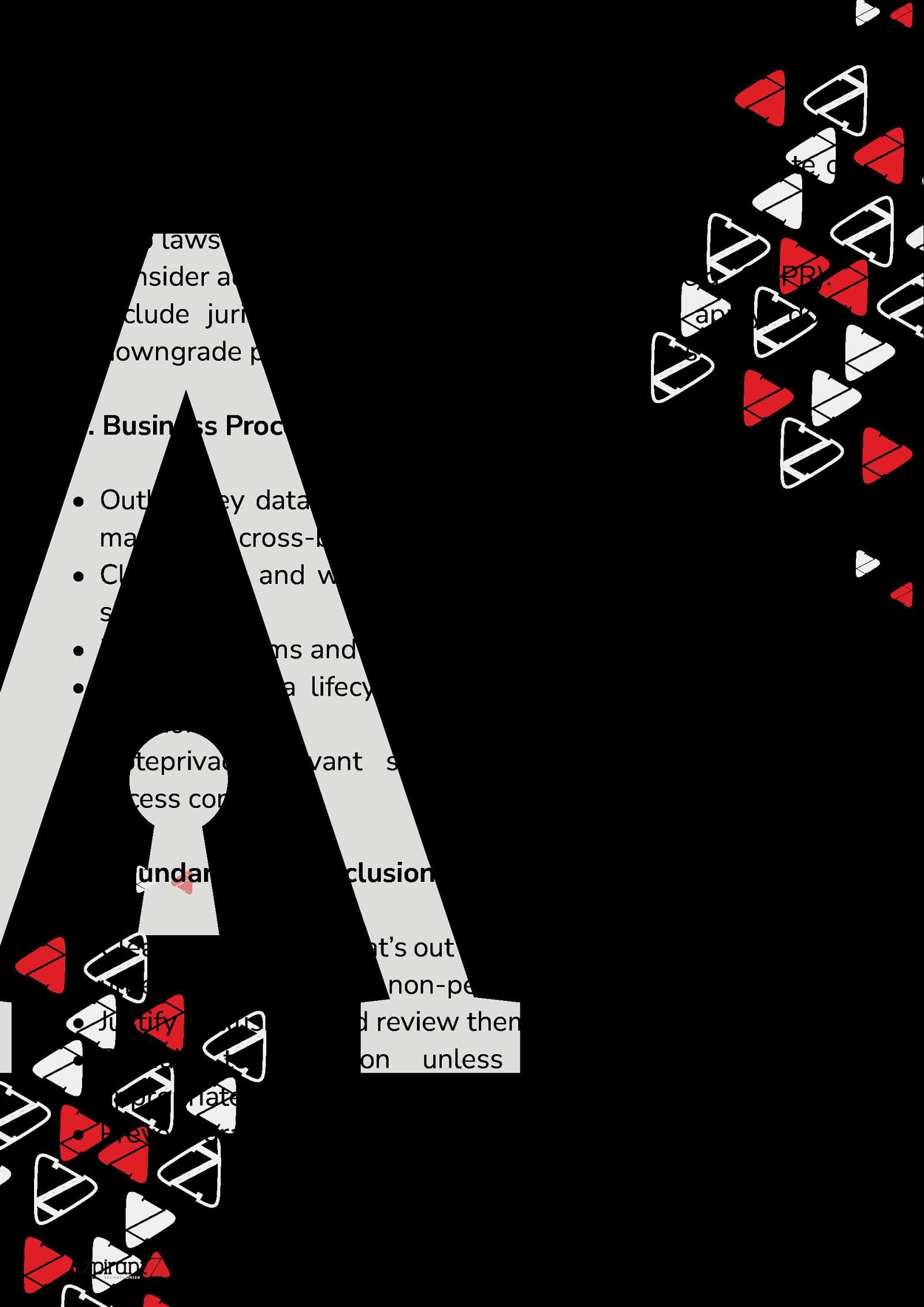
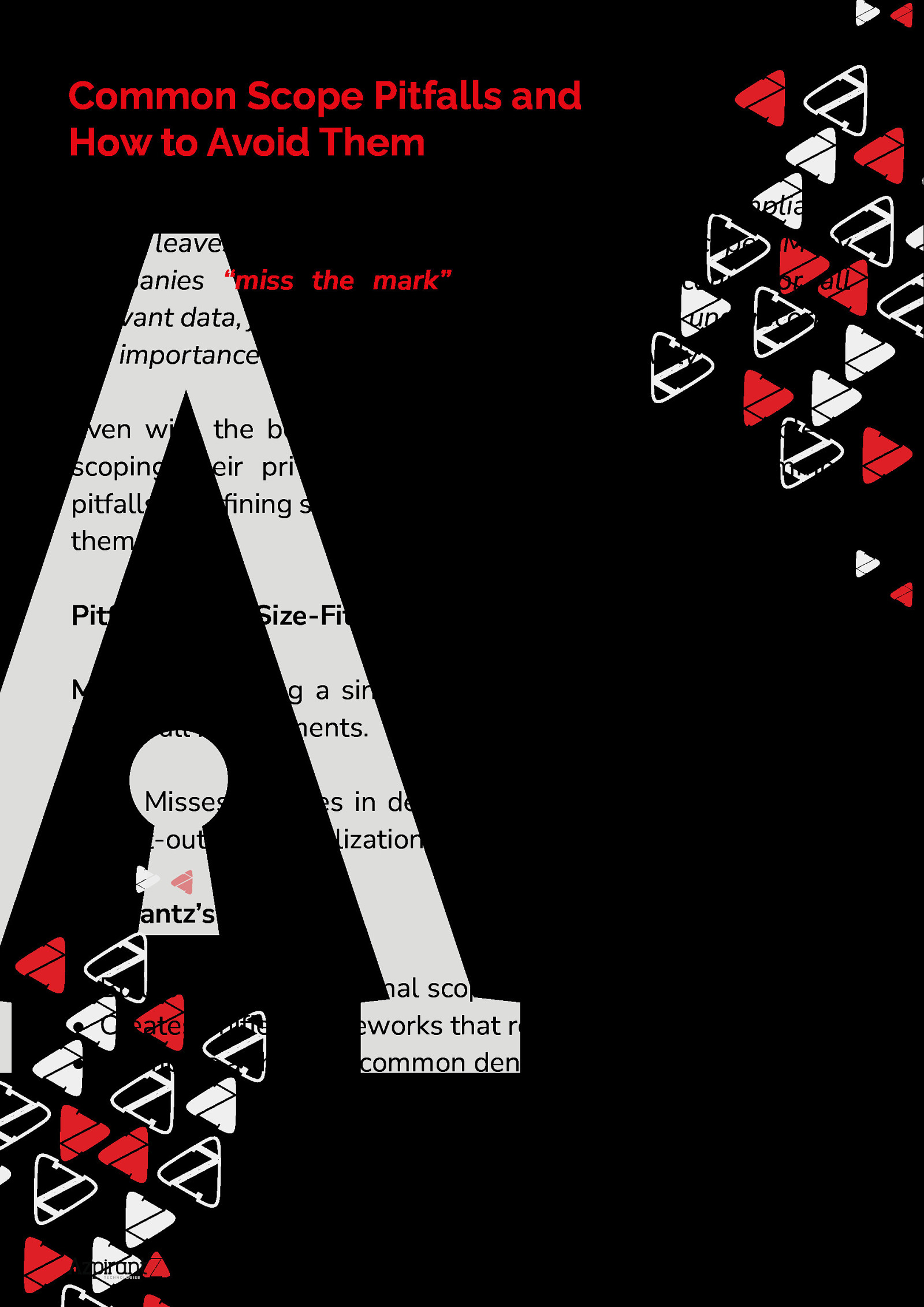
Common Scope Pitfalls and How to Avoid Them A rushed, one-size-fits-all approach to privacy compliance often leaves critical gaps in the program’s scope. Many companies “miss the mark” by failing to account for all relevant data, jurisdictions, or business functions, underscoring the importance of defining scope comprehensively. Even with the best intentions, organizations can stumble in scoping their privacy program. Below are some common pitfalls in defining scope; and how Azpirantz helps clients avoid them: Pitfall 1: One-Size-Fits-All Compliance Mistake: Applying a single law (like GDPR) and assuming it covers all requirements. Risk: Misses nuances in definitions, obligations (e.g., consent vs. opt-out, data localization). Azpirantz’s Approch: • Builds multi-jurisdictional scopes using a regulatory matrix. • Creates unified frameworks that respect local differences. • Promotes a “highest common denominator” policy baseline. www.azpirantz.com | 08
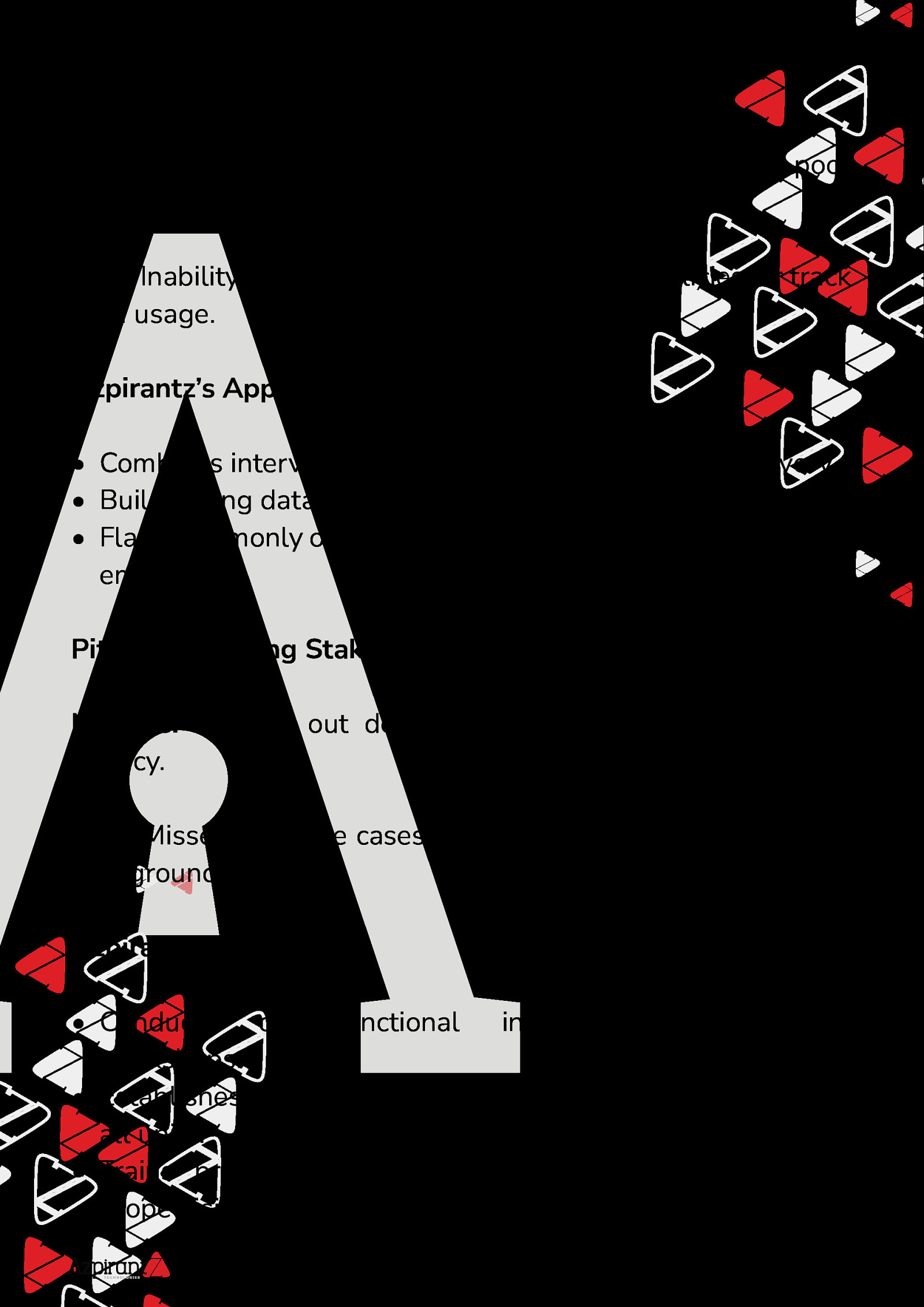
Pitfall 2: Incomplete Data Discovery Mistake: Missing data sources, systems, or flows due to poor visibility. Risk: Inability to fulfill DSARs, apply retention policies, or track data usage. Azpirantz’s Approch: • Combines interviews and scanning tools for data discovery. • Builds living data inventories. • Flags commonly overlooked data (e.g., cloud drives, backups, email lists). Pitfall 3: Ignoring Stakeholders Mistake: Leaving out departments not traditionally tied to privacy. Risk: Missed data use cases (e.g., IoT sensor data, outsourced background checks). Azpirantz’s Approch: • Conducts cross-functional interviews and privacy workshops. • Establishes privacy governance committees with reps from all units. • Trains “privacy champions” across departments for ongoing scope visibility. www.azpirantz.com | 09
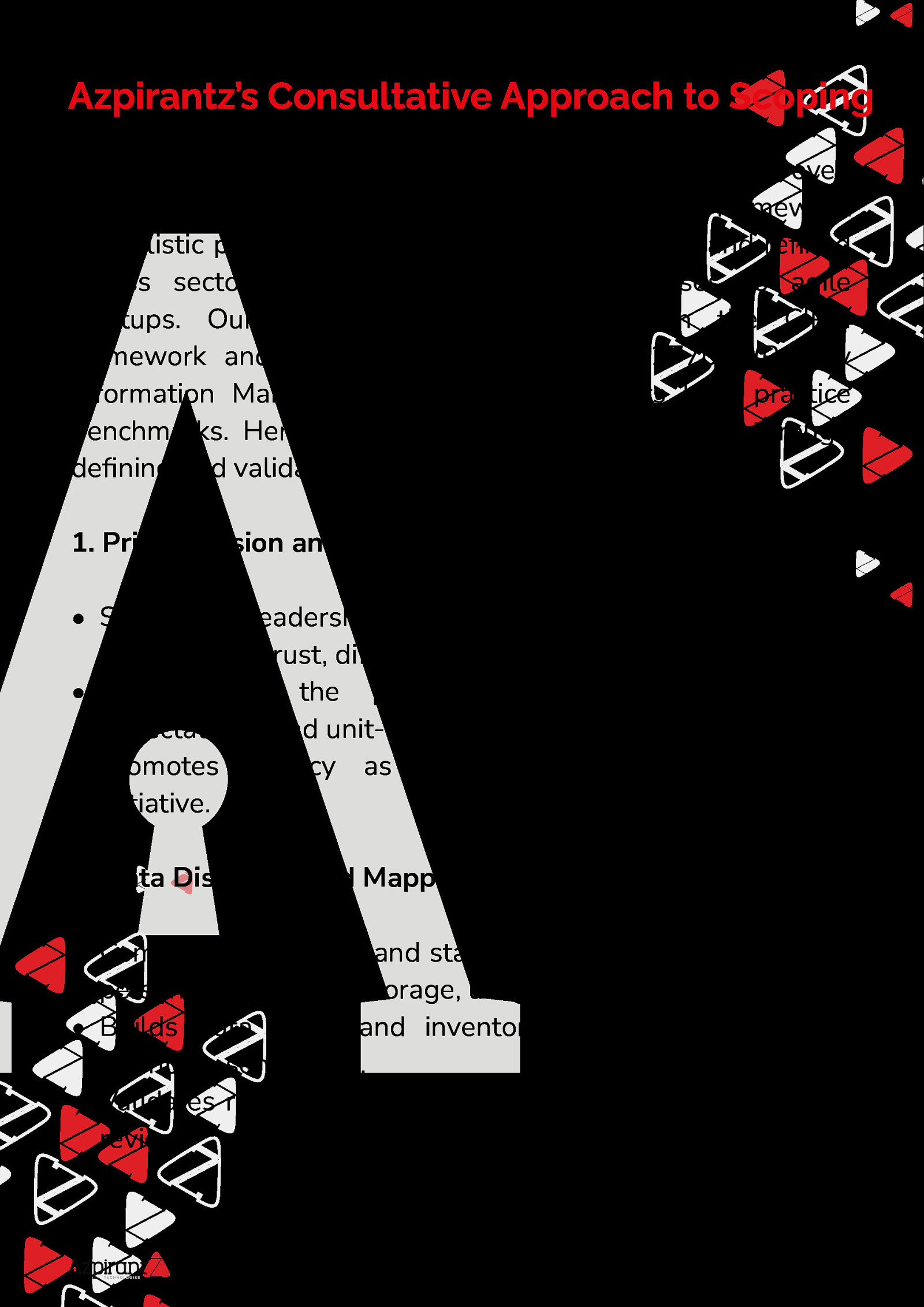
Azpirantz’s Consultative Approach to Scoping A well-defined scope is the product of a systematic and proven methodology. At Azpirantz, we have developed a framework for holistic privacy coverage that has been tested and refined across sectors; from multinational enterprises to agile startups. Our methodology is aligned with the CIPM framework and global standards like ISO 27701 (Privacy Information Management), ensuring it meets best practice benchmarks. Here’s how we typically guide clients through defining and validating their privacy program scope: 1. Privacy Vision and Stakeholder Alignment • Starts with leadership workshops to align on privacy goals (compliance, trust, differentiation). • Drafts/refines the privacy mission and sets roles, expectations, and unit-level contacts. • Promotes privacy as a cross-functional, team-driven initiative. 2. Data Discovery and Mapping • Combines tech scans and stakeholder interviews to identify personal data types, storage, usage, and flows. • Builds data maps and inventories with metadata (e.g., retention, sensitivity). • Validates results and flags uncertain or legacy systems for review. www.azpirantz.com | 11
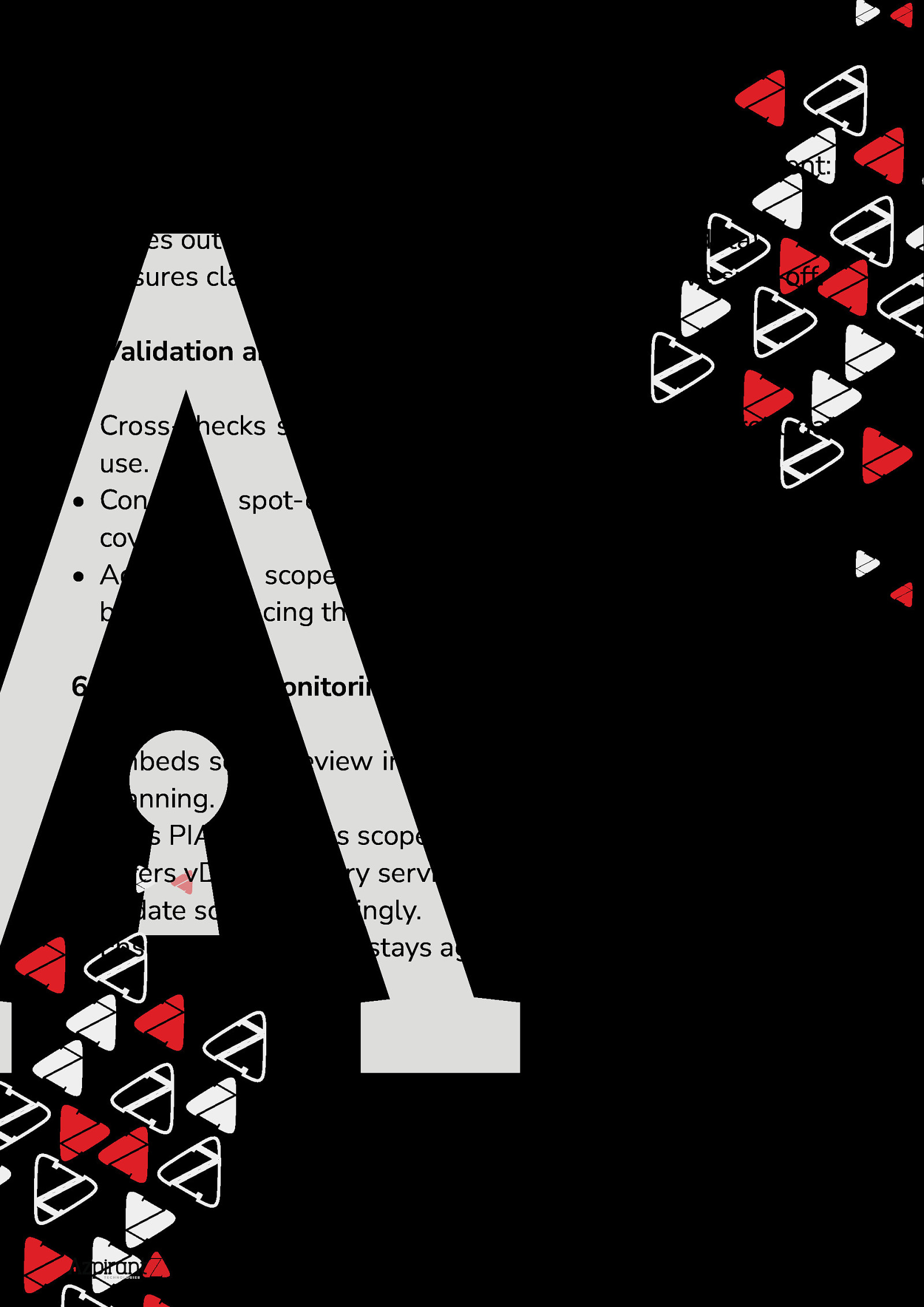
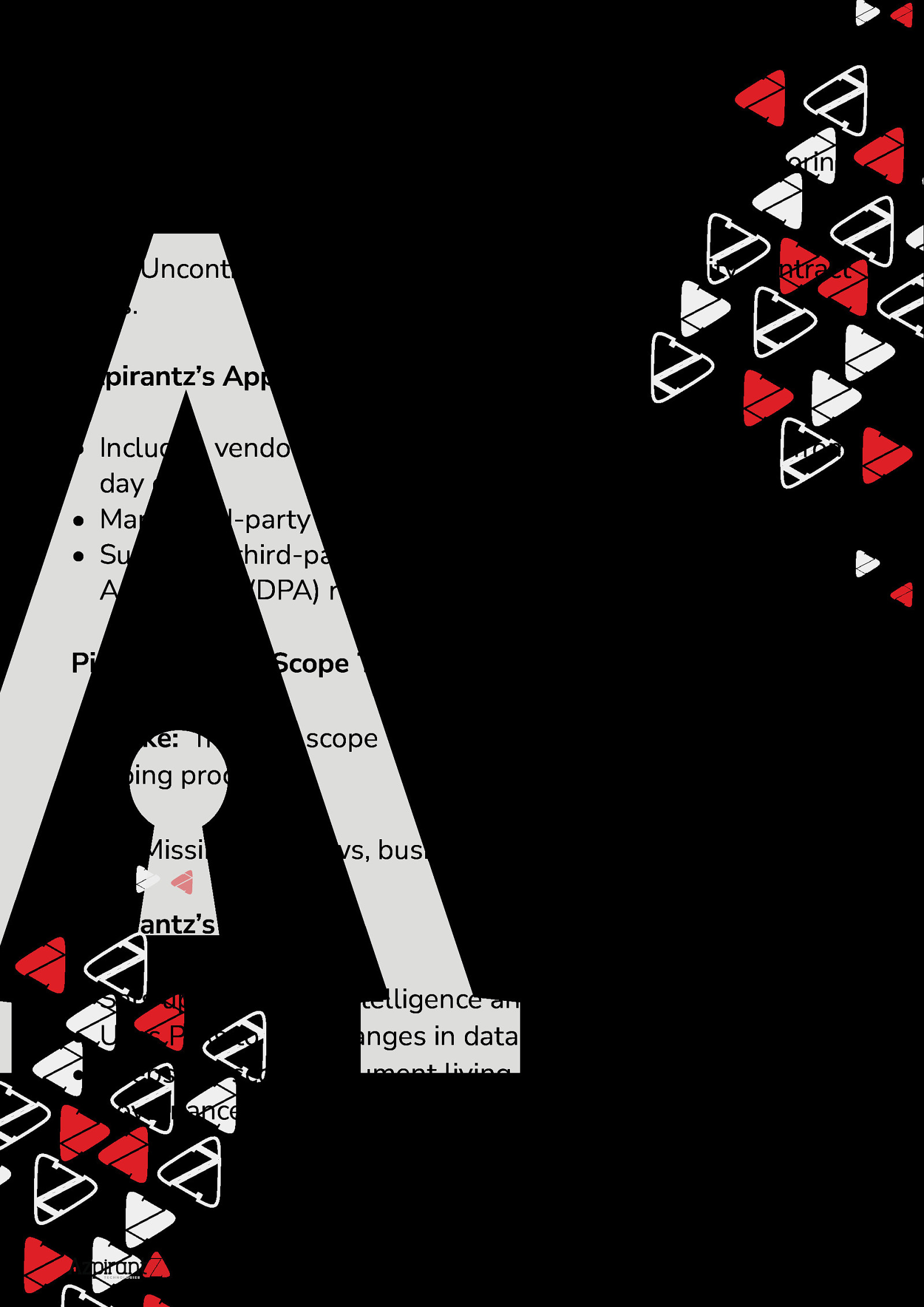
Pitfall 4: Overlooking Third Parties Mistake: Limiting scope to internal systems and ignoring vendors. Risk: Uncontrolled data sharing, lack of accountability, contract gaps. Azpirantz’s Approch: • Includes vendor environments and contracts in scope from day one. • Maps third-party data flows. • Supports third-party assessments and Data Processing Agreement (DPA) reviews. Pitfall 5: Static Scope That Doesn’t Evolve Mistake: Treating scope as a one-time project instead of an ongoing process. Risk: Missing new laws, business changes, or evolving risks. Azpirantz’s Approch: • Sets up regulatory intelligence and periodic scope reviews. • Uses PIAs to flag changes in data, vendors, or geographies. • Keeps the scope document living and integrated into project governance. www.azpirantz.com | 10
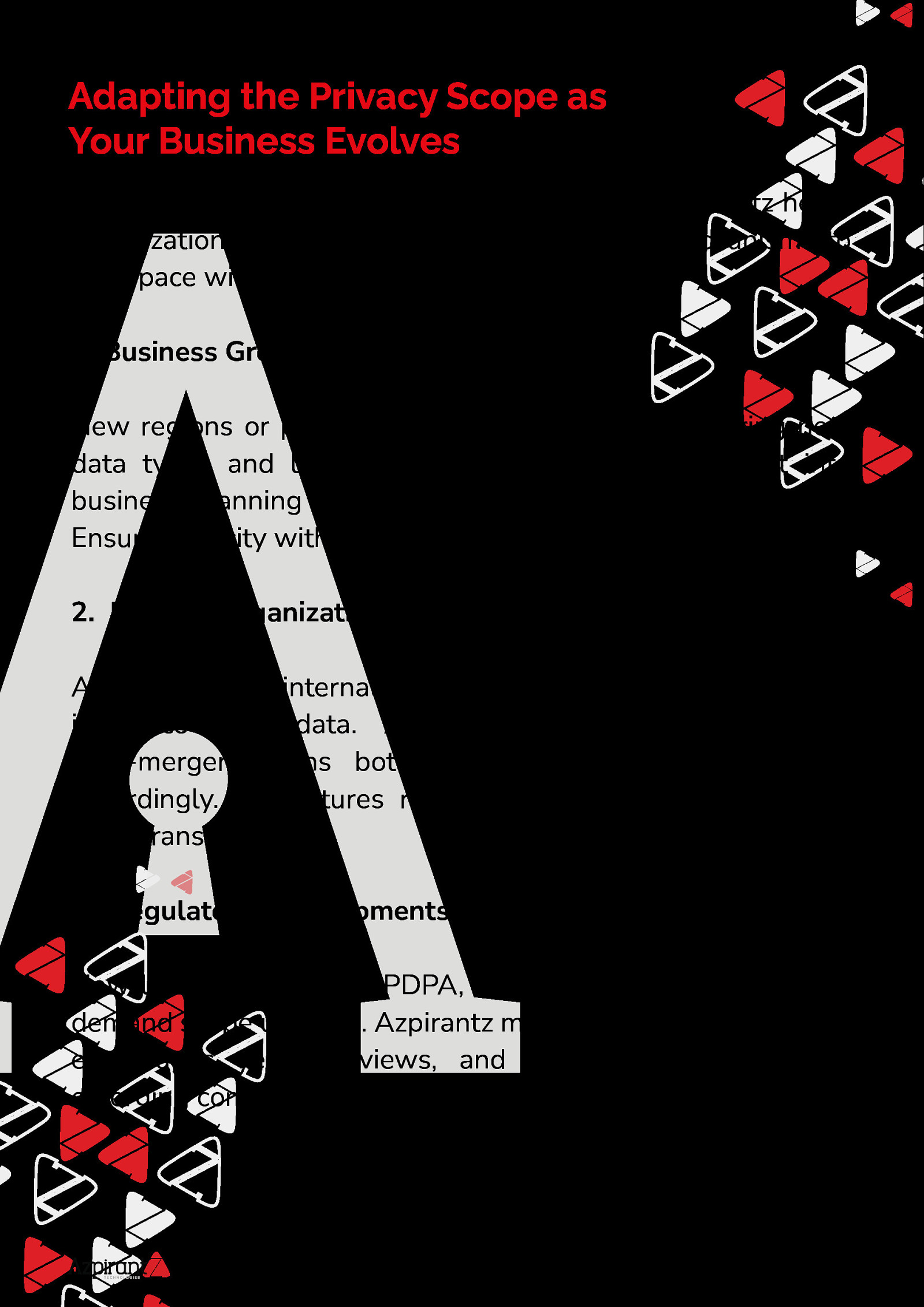
Adapting the Privacy Scope as Your Business Evolves Defining privacy scope is not a one-time task. Azpirantz helps organizations establish living, adaptive scope mechanisms to keep pace with change. 1. Business Growth and Market Expansion New regions or products (e.g., global app launch) bring new data types and laws. Embed privacy risk assessment into business planning to update scope documents and controls. Ensure capacity with local champions or DPOs. 2. M&A or Organizational Changes Acquisitions and internal restructuring shift responsibilities and introduce new data. Azpirantz conducts gap analyses post-merger, aligns both programs, and updates scope accordingly. Divestitures require clean data separation and legal transfer review. 3. Regulatory Developments New laws (like India’s DPDPA, China’s PIPL, U.S. state laws) demand scope updates. Azpirantz monitors global regulations, encourages yearly reviews, and helps align scope with emerging compliance needs. www.azpirantz.com | 13
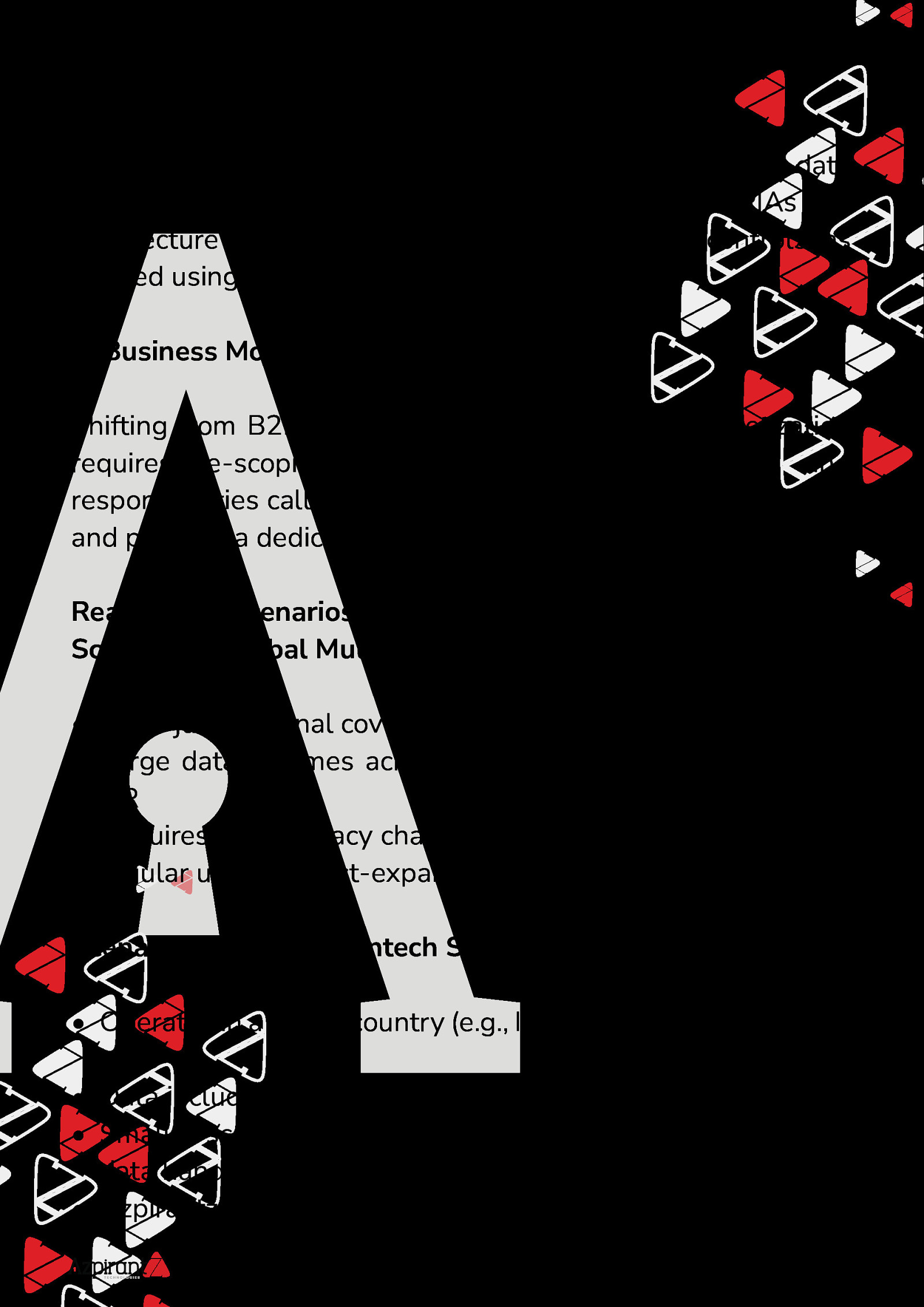
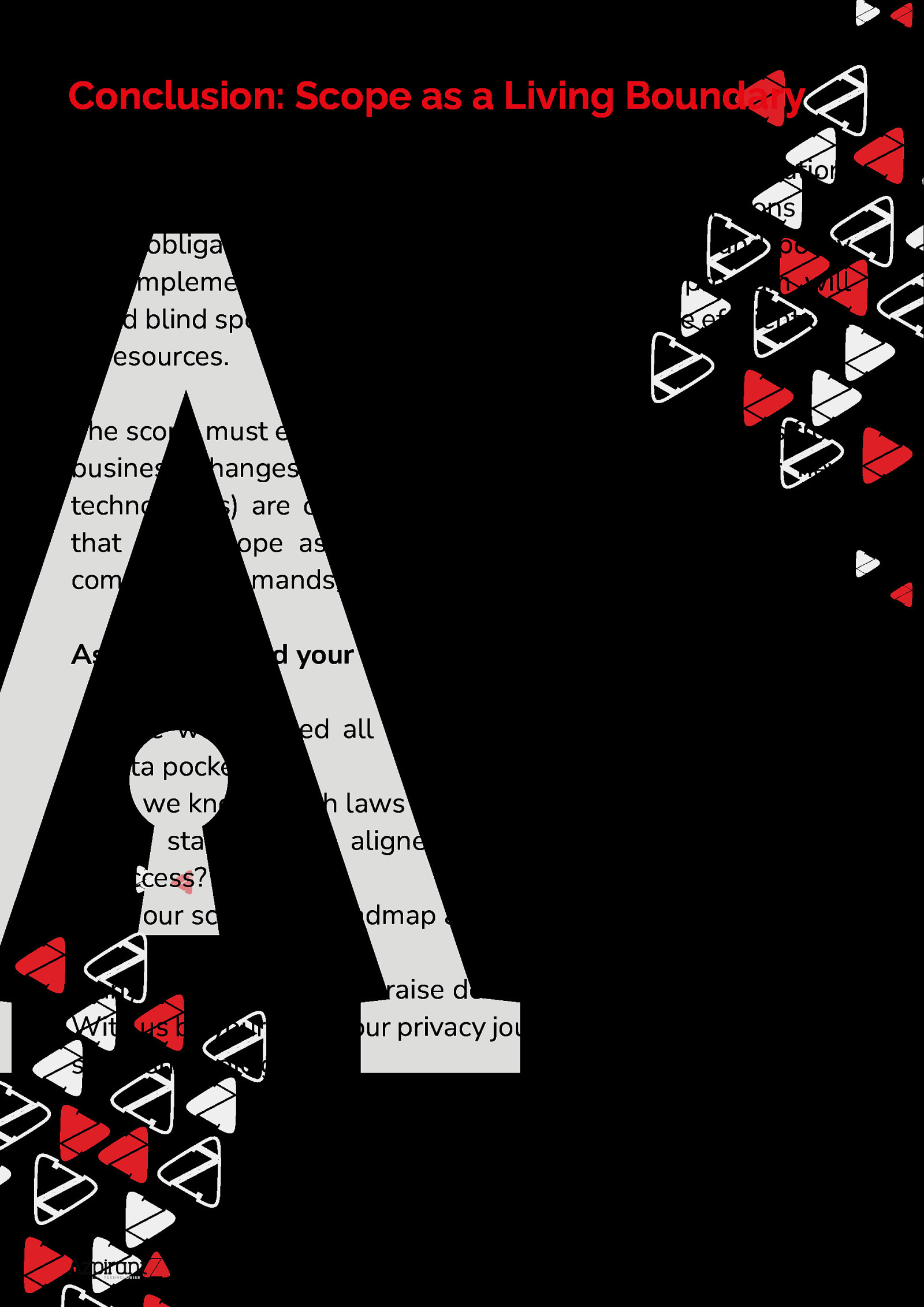
Conclusion: Scope as a Living Boundary A clearly defined privacy scope is your program’s foundation. Done right, it aligns privacy with real business operations and legal obligations, guiding every decision, control, and policy you implement. With this clarity, your privacy program will avoid blind spots, target high-risk areas, and make efficient use of resources. The scope must evolve. Yearly reviews, PIAs, and triggers from business changes (like mergers, market expansion, or new technologies) are crucial to keeping it current. Organizations that treat scope as a living boundary stay ahead of risks, compliance demands, and stakeholder expectations. Ask yourself and your team: • Have we mapped all personal data and identified hidden data pockets? • Do we know which laws apply in all our jurisdictions? • Are stakeholders aligned and engaged for long-term success? • Do our scope and roadmap address our biggest data risks? If any of these questions raise doubt, Azpirantz is here to help. With us by your side, your privacy journey is just beginning—on solid, strategic ground. www.azpirantz.com | 15
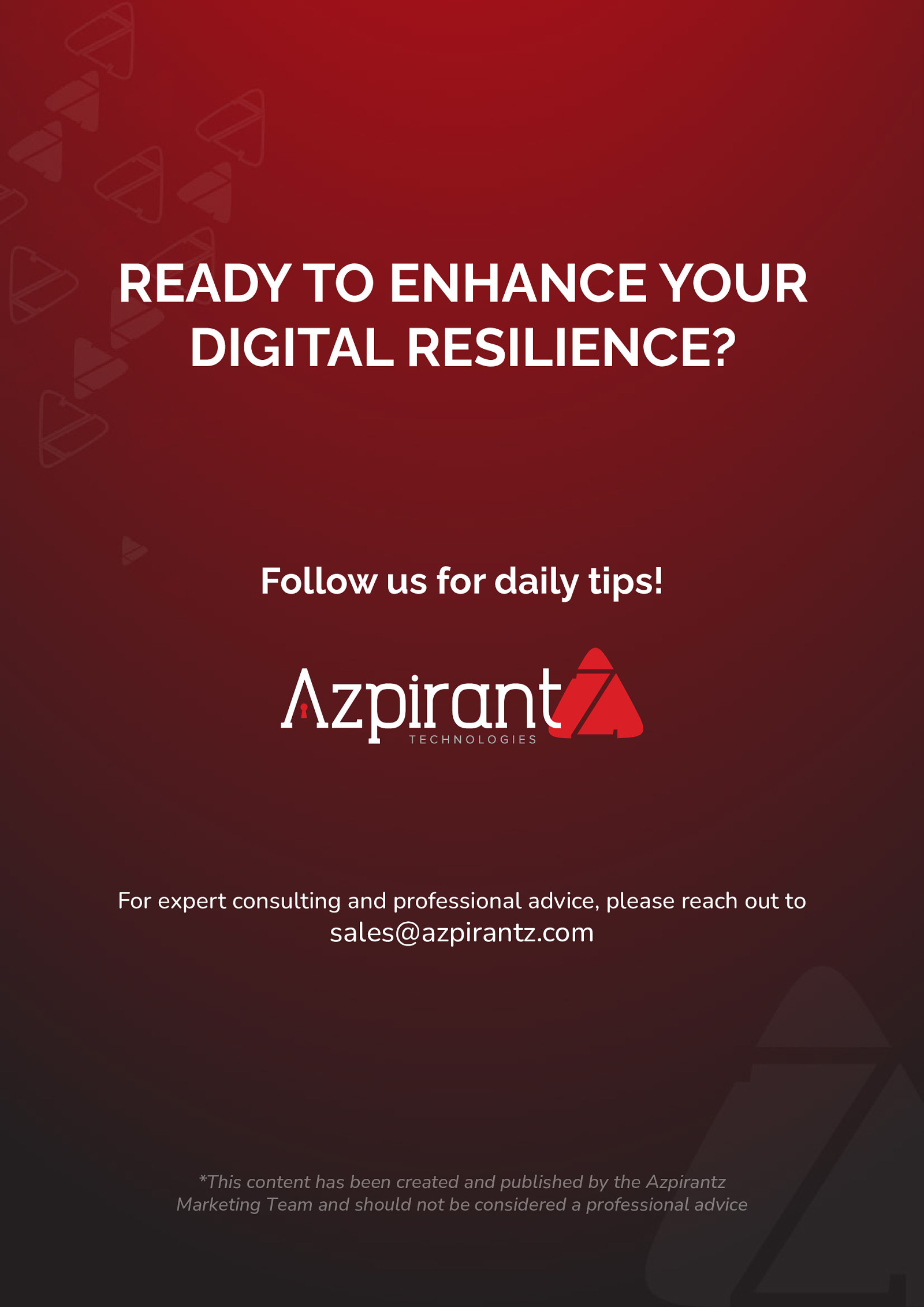
READY TO ENHANCE YOUR DIGITAL RESILIENCE? Follow us for daily tips! For expert consulting and professional advice, please reach out to sales@azpirantz.com *This content has been created and published by the Azpirantz Marketing Team and should not be considered a professional advice This content is created by the Azpirantz Marketing Team.